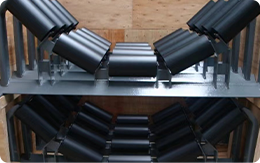 Afrikaans
Afrikaans  Albanian
Albanian  Amharic
Amharic  Arabic
Arabic  Armenian
Armenian  Azerbaijani
Azerbaijani  Basque
Basque  Belarusian
Belarusian  Bengali
Bengali  Bosnian
Bosnian  Bulgarian
Bulgarian  Catalan
Catalan  Cebuano
Cebuano  Corsican
Corsican  Croatian
Croatian  Czech
Czech  Danish
Danish  Dutch
Dutch  English
English  Esperanto
Esperanto  Estonian
Estonian  Finnish
Finnish  French
French  Frisian
Frisian  Galician
Galician  Georgian
Georgian  German
German  Greek
Greek  Gujarati
Gujarati  Haitian Creole
Haitian Creole  hausa
hausa  hawaiian
hawaiian  Hebrew
Hebrew  Hindi
Hindi  Miao
Miao  Hungarian
Hungarian  Icelandic
Icelandic  igbo
igbo  Indonesian
Indonesian  irish
irish  Italian
Italian  Japanese
Japanese  Javanese
Javanese  Kannada
Kannada  kazakh
kazakh  Khmer
Khmer  Rwandese
Rwandese  Korean
Korean  Kurdish
Kurdish  Kyrgyz
Kyrgyz  Lao
Lao  Latin
Latin  Latvian
Latvian  Lithuanian
Lithuanian  Luxembourgish
Luxembourgish  Macedonian
Macedonian  Malgashi
Malgashi  Malay
Malay  Malayalam
Malayalam  Maltese
Maltese  Maori
Maori  Marathi
Marathi  Mongolian
Mongolian  Myanmar
Myanmar  Nepali
Nepali  Norwegian
Norwegian  Norwegian
Norwegian  Occitan
Occitan  Pashto
Pashto  Persian
Persian  Polish
Polish  Portuguese
Portuguese  Punjabi
Punjabi  Romanian
Romanian  Russian
Russian  Samoan
Samoan  Scottish Gaelic
Scottish Gaelic  Serbian
Serbian  Sesotho
Sesotho  Shona
Shona  Sindhi
Sindhi  Sinhala
Sinhala  Slovak
Slovak  Slovenian
Slovenian  Somali
Somali  Spanish
Spanish  Sundanese
Sundanese  Swahili
Swahili  Swedish
Swedish  Tagalog
Tagalog  Tajik
Tajik  Tamil
Tamil  Tatar
Tatar  Telugu
Telugu  Thai
Thai  Turkish
Turkish  Turkmen
Turkmen  Ukrainian
Ukrainian  Urdu
Urdu  Uighur
Uighur  Uzbek
Uzbek  Vietnamese
Vietnamese  Welsh
Welsh  Bantu
Bantu  Yiddish
Yiddish  Yoruba
Yoruba  Zulu
Zulu Understanding the Functionality and Importance of Take-Up Pulleys in Conveyor Systems
Understanding Take-Up Pulleys An Essential Component in Conveyor Systems
In industrial settings, efficiency and reliability are key drivers of productivity. One crucial component that contributes to the smooth operation of various machinery, particularly conveyor systems, is the take-up pulley. Understanding the function and significance of take-up pulleys can help industries optimize their operations and reduce downtime.
What is a Take-Up Pulley?
A take-up pulley is a mechanical device used in conveyor systems to ensure the proper tension of the conveyor belt. It plays an essential role in maintaining the belt’s alignment and preventing slippage, thereby ensuring a consistent material flow. Take-up pulleys are typically located at the end of the conveyor belt system and are designed to adjust the tension by moving the belt either forward or backward.
Functions of Take-Up Pulleys
1. Tension Management One of the primary functions of a take-up pulley is to manage the tension of the conveyor belt. If the belt is too loose, it may slip, leading to decreased efficiency and potential damage to the system. Conversely, if the belt is too tight, it can cause excessive wear and tear on the machinery. Proper tension ensures that the belt operates efficiently and lasts longer.
2. Alignment Maintenance Take-up pulleys also help maintain the alignment of the conveyor belt. Any misalignment can lead to uneven wear, which can cause the belt to break or fail. By allowing for adjustments in tension, take-up pulleys help keep the belt centered and aligned over the pulleys and rollers.
3. Belt Replacement When it comes time to replace the conveyor belt, take-up pulleys facilitate this process by allowing for adjustments to the belt length. This is particularly useful in systems where the conveyor belt is subjected to various loads and conditions.
take-up pulley

4. Compensation for Stretch Over time, conveyor belts can stretch due to continuous use, which can influence their performance. Take-up pulleys are designed to compensate for this stretch, ensuring that the belt remains at an optimal tension level throughout its lifespan.
Types of Take-Up Pulleys
There are different types of take-up pulleys, including fixed, automatic, and manual take-up systems. Each type has its advantages and considerations based on the specific requirements of the conveyor system
- Fixed Take-Up In a fixed take-up system, the tension is manually adjusted using a bolt system. While straightforward, this option requires regular monitoring and adjustments.
- Automatic Take-Up This more advanced option uses spring-loaded mechanisms that automatically adjust the tension in response to changes in the conveyor belt’s stretch. This is ideal for systems requiring minimal manual intervention.
- Manual Take-Up Similar to fixed systems, manual take-up setups require operators to adjust the tension physically. While they may be less efficient than automatic systems, they can still be effective in various applications.
Conclusion
Take-up pulleys are integral to the operation of conveyor systems, playing a vital role in tension management, alignment maintenance, and overall system efficiency. Understanding the functionality and types of take-up pulleys enables industries to select the appropriate systems for their specific needs. By ensuring proper tension in conveyor belts, businesses can improve reliability, reduce maintenance costs, and enhance productivity. As industries continue to evolve, the importance of take-up pulleys will remain a critical aspect of mechanical design and operational efficiency.
-
Trusted Conveyor Solutions from Leading Conveyor Idler Roller ManufacturersNewsJun.27,2025
-
Reliable Return Idler Solutions for Efficient Belt Conveyor SystemsNewsJun.27,2025
-
Precision Conveyor Accessories for Streamlined Material HandlingNewsJun.27,2025
-
High-Quality Belt Conveyor Idler Solutions for Efficient Material HandlingNewsJun.27,2025
-
High-Performance Belt Conveyor Pulleys for Reliable Material HandlingNewsJun.27,2025
-
Enhancing Material Handling EfficiencyNewsJun.27,2025





























